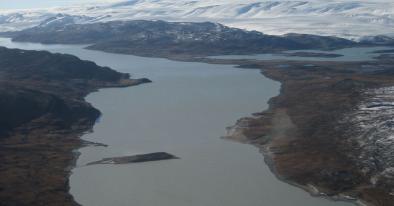Science Source
The implication of nonradiative energy fluxes dominating Greenland ice sheet exceptional ablation area surface melt in 2012
- Looks at two exceptionally large July 2012 multiday Greenland ice sheet melt episodes, where nonradiative energy fluxes (sensible, latent, rain, and subsurface collectively) dominated the ablation area surface energy budget of the southern and western ice sheet (ice melt is usually dominated by the radiant energy associated with sunlight)
- States that on average the nonradiative energy fluxes contributed up to 76% of daily melt energy at nine automatic weather station sites in Greenland
- States that these powerful melt episodes (which comprised 6% of the ablation period), resulted in 12–15% of the south and west Greenland automatic weather station annual ablation totals
- Analyses high resolution (~5 km) HIRHAM5 regional climate model output, which indicates widespread dominance of nonradiative energy fluxes across the western ablation area during these episodes—though the HIRHAM5 still underestimates melt by up to 56% during these episodes due to a systematic underestimation of turbulent energy fluxes typical of regional climate models
- Research indicates that the energy associated with air temperature and moisture was the major driver of the exceptional melt episodes
- Results have implications for underestimating future melt, when exceptional melt episodes are expected to occur more frequently
Related Content
Science Source
| Geophysical Research Letters
Melting glaciers stimulate large summer phytoplankton blooms in southwest Greenland waters
Kevin R. Arrigo, Gert L. van Dijken, Renato M. Castelao et al
Science Source
| Geophysical Research Letters
Ice Core Records of West Greenland Melt and Climate Forcing
K. A. Graeter, E. C. Osterberg, D. G. Ferris et al
Science Source
| Science Advances
Abrupt shift in the observed runoff from the southwestern Greenland ice sheet
Andreas P. Ahlstrøm, Dorthe Petersen, Peter L. Langen et al
Headline

Dec 15, 2017 | Vox
Greenland's ice sheet is driving global sea level rise. One section is melting 80% faster.


